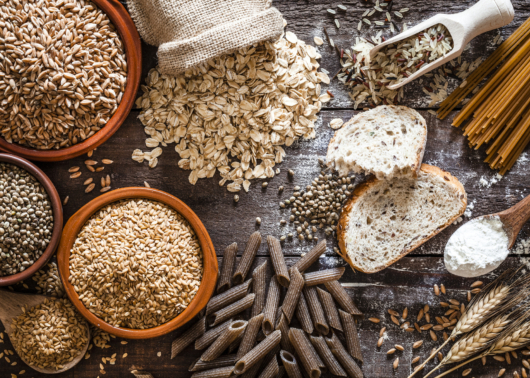
The food and beverage industry tends to generate more questions as time goes on: Where does my food come from? Is this meat? Why can’t I eat a tub of mint chip ice cream every day and stay healthy?
More importantly for manufacturers, where is the industry headed?
On that note, we’re back with more lessons from ADM Toronto. This time we’re sharing our takeaways from a talk about the state of the food and beverage industry, led by Charmaine Goddeeris of BDO Canada LLP. Here’s what we learned.
9 key food and beverage trends to watch
Go green, eat beans
From tofu steaks to Beyond Meat burgers, plant-based proteins have become a staple in the mainstream diet. For reasons like the environment, weight loss and general health benefits, more consumers are incorporating vegetarian and vegan dishes into their diets, whether it’s one day a week (i.e. flexitarian) or every day.
Gluten riddance
Not to be eclipsed by newer trends, gluten-free options are still going strong. About one percent of North Americans are at risk of Celiac, while many others risk developing gluten intolerance — and some people just prefer not to eat gluten. Whatever the case, they’re becoming more invested in reading labels and learning about the certification process for gluten-free products.
More educated consumers
As consumers learn more about nutrition and adopt more nuanced diets, they are more interested in foods with labels indicating lower sodium, low fat, natural sugars, GMO-free and organic. If you’re looking to enter this space, Goddeeris says it takes a robust research and development program to come up with a product that meets consumer needs and is widely accepted enough that it’s economically viable to produce.
Labels matter
Many consumers contend with allergies to foods like soy, dairy and tree nuts. They’ll be on the lookout for products labelled as “free from” these allergens. To make it work, Goddeeris says you’ll need a strong allergen program and a good sourcing program. On the conveying side, a sanitary-grade valve makes it easy to clean up and eliminate contaminants.
From the couch to the kitchen
Consumers are always looking for ways to save time in their busy lives, which can mean skipping trips to the grocery store in favor of ordering food from subscription clubs, meal kits, delivery apps like Uber Eats and direct-from-farm sources. When it comes to online ordering, food and beverage manufacturers are increasingly concerned about having their products show up at the top of searches.
Knowing is half the battle
More consumers are asking, “Where does my food come from?” The question of sourcing includes the impact on the environments and communities where your ingredients are sourced, as well as the workers who harvest the crops. Many people will gravitate away from brands whose practices contribute to things like forest destruction, child labor and exploitation of women. Goddeeris stresses the importance of maintaining fairness for workers and sustainable harvest methods in your processes.
Just taste it, don’t waste it
In keeping with environmental protection, some brands are offering less wasteful options — like companies that sell boxes of “ugly” or wonky-looking vegetables that, despite being perfectly good to eat, don’t sell well in grocery stores. Other brands emphasize better sourcing options, healthy and humane treatment of animals, and less wasteful packaging (such as containers made from recycled cardboard or biodegradable sources).
Keep consumers in the loop
How hard do consumers need to search to find out where their products come from? That’s where transparency comes in: it lets you tell the story behind your product and serves the double purpose of educating consumers, reassuring them that the labels on the package accurately reflect what’s inside.
Pricey is dicey
Consumers want to see all those changes without a price increase. Some retailers turn to more unsavory options to help their margins, but Goddeeris emphasizes the need for honest solutions, such as focusing on higher margin jobs and working with vendors to reduce waste.
Stay on trend and on budget
At ACS Valves, we’re all about helping food and beverage manufacturers keep up with consumer trends. If you’re looking for ways to save money in your process, ask us about sanitary valves with Quick-Clean™ features, which save hours of downtime with an easy-to-clean design. We’re here to help!


